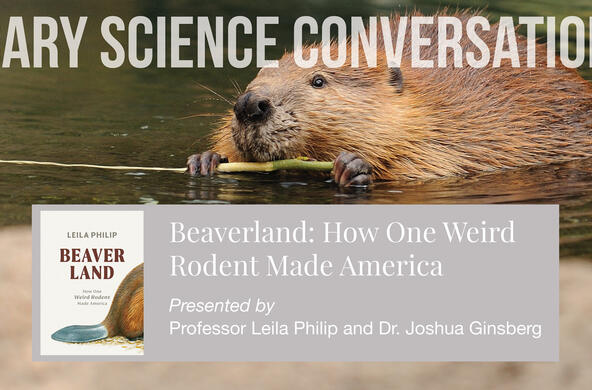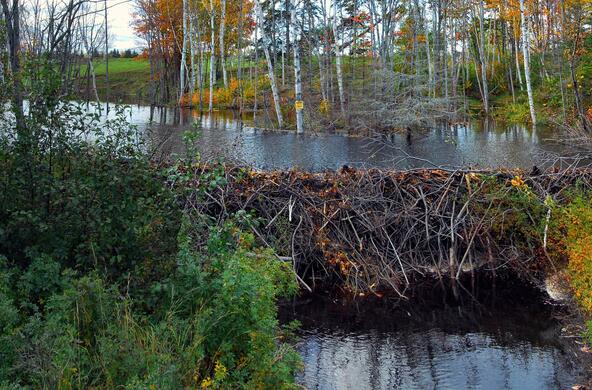Higher sea levels. More intense storms. Drought.
These are the most common impacts associated with climate change.
But what about pond algae? Or diseased moose? Or less maple syrup?
In the December edition of the scientific journal BioScience, scientists detail how climate change has been affecting — and could further change — a forest ecosystem in New Hampshire. The study seeks to go beyond the most obvious impacts to understand how climate change is playing out at a unique location in everything from soil dynamics to wildlife habits.
“We know it is going to get warmer and maybe it is going to get wetter, and that has important effects,” said Peter Groffman, a senior scientist at Cary Institute of Ecosystem Studies in Millbrook and lead author of the study. “But the way that those effects are actually going to play out in a real ecosystem is very complicated because it depends on just how the climate changes in a particular place. It depends on the plants and animals that are in that place. And it depends on everything that has happened in that place in the past.”
The study is noteworthy for the number of contributors — nearly two dozen, drawn from federal agencies, academic institutions and nonprofits — and for where it was conducted.
Researchers worked at Hubbard Brook Experimental Forest, a 7,700-acre preserve in central New Hampshire set aside in 1955 by the U.S. Forest Service for long-term research. Hubbard Brook is akin to a living laboratory, replete with sensors and data stretching back decades. The forest service manages 80 such sites nationwide.
“This network is really important because things in the environment change very slowly and in complex ways,” Groffman said, “and one way to sort them out is to have this network of long-term sites where you can collect basic data and see how the environment is changing.”
Groffman said he was most surprised by how much has changed during the winter months at Hubbard Brook. Though the amount of snowfall has not changed, it doesn’t stay on the forest floor as long as it used to. That means sunlight has begun reaching the forest floor earlier in the year, jump-starting microorganisms that decompose organic matter into nutrients.
The problem? Trees aren’t ready to take up those nutrients until they leaf out, a process that has not kept up with the soil warming. Without those huge straws drawing from the soil, some of the nutrients have begun to leach into streams, rivers and lakes.
“It’s bad for the forest, and it’s bad for the receiving waters,” Groffman said. “When the phosphorus ends up in receiving streams and lakes, it causes an overgrowth of algae.”
A biology professor from Vassar College has projected that less snow cover could mean more disease for the local moose. Since moose like tromping through high snow — and deer don’t — the moose in Hubbard Brook have been less susceptible to a deer-borne parasite.
The brain-worm parasite is spread in the deer’s feces. Moose pick it up when they go eat in their aquatic environments in the summer. As snow cover reduces, deer will expand their range in Hubbard Brook, Vassar’s Lynn Christenson said.
“You realize (the effect of climate change) is way more complex than just predicting what it is going to look like when the temperature rises by X degrees,” Christenson said. “It’s not that simple.”
Less snowpack means that during the coldest months, the forest floor may be more prone to hard freezes. The study says sugar maple tree roots are particularly susceptible to damage from soil freezing, potentially leading to increased mortality and reduced sap production for maple syrup.
Other impacts are less clear. Some models have projected that climate change could be a good thing for the hemlock tree. But warmer temperatures also may allow the invasive woolly adelgid to expand its territory. The pest sucks sap from hemlocks and has had devastating effects elsewhere in the country.
The scientists say their findings could be a resource for other ecosystems that share characteristics with Hubbard Brook.
“As you get more studies like this alerting people to the surprising way climate change is playing out, it’s going to direct people to start paying attention to some of these things,” Groffman said.
And since it’s clear that climate change affects different ecosystems in different ways, the study highlights the need for continued research, the scientists say. Understanding how each unique area is affected, they say, allows for better planning.
“We have choices to make,” Christenson said. “We can decide what we would like to be around in the future. And the only way we can understand what we want to have around in the future is understanding what we require and how those things come together to provide those things that are so important to us.”






